Leibniz Prizewinner Prof. Dr. Oliver G. Schmidt is Inaugurated as First Scientific Director of the Research Center MAIN
Prof. Dr. Thomas Otto received the Medal of Honor of Chemnitz University of Technology also in recognition of his services to MAIN and beyond
-
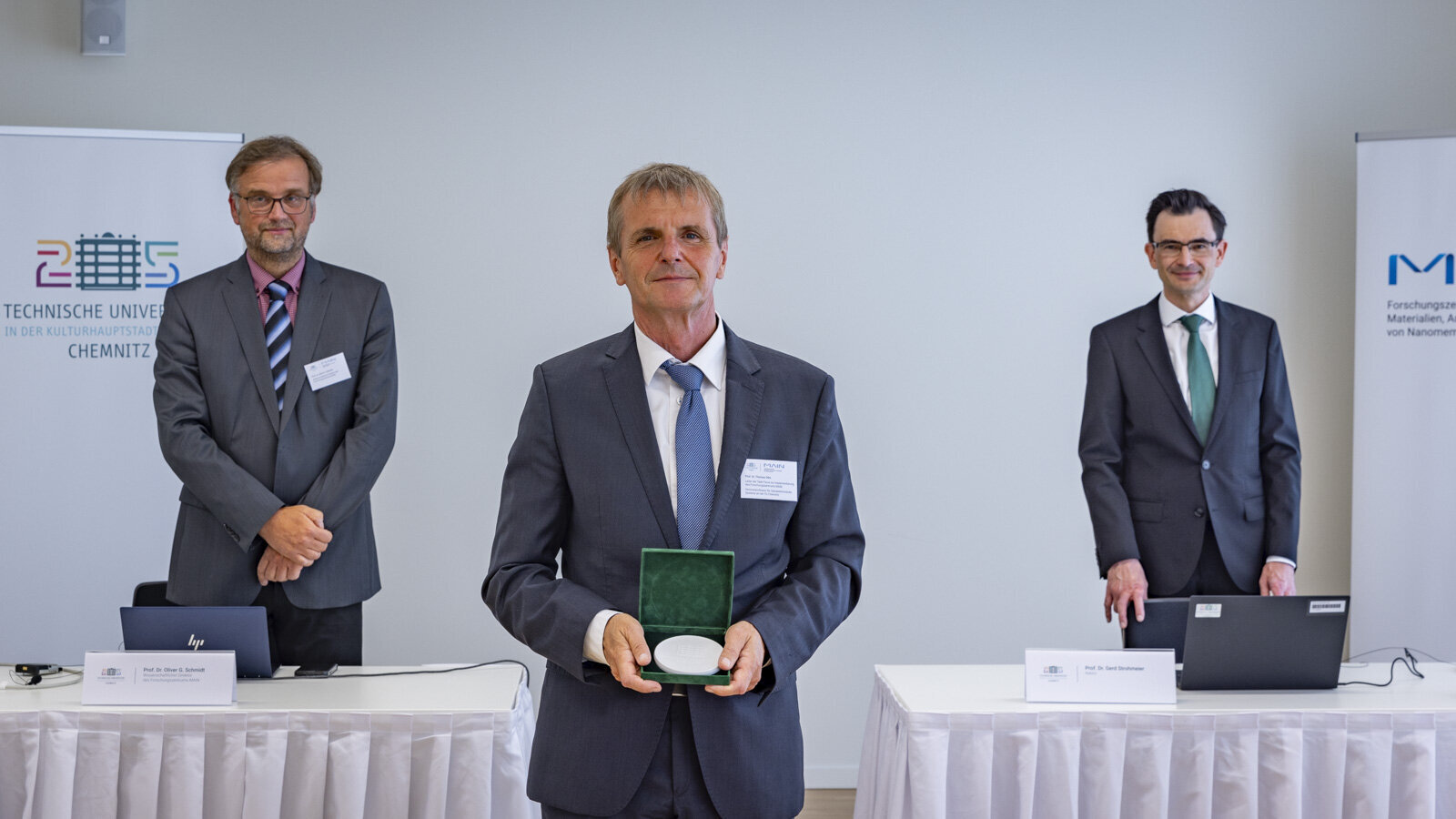
President Prof. Dr. Gerd Strohmeier (right) presented the Medal of Honor of Chemnitz University of Technology to Prof. Dr. Thomas Otto (center), who, among other achievements, led the task force for the implementation of the MAIN Research Center with great commitment. Among the first congratulators was Prof. Dr. Oliver G. Schmidt (left), first Scientific Director of the Research Center MAIN. Photo: Jacob Müller -
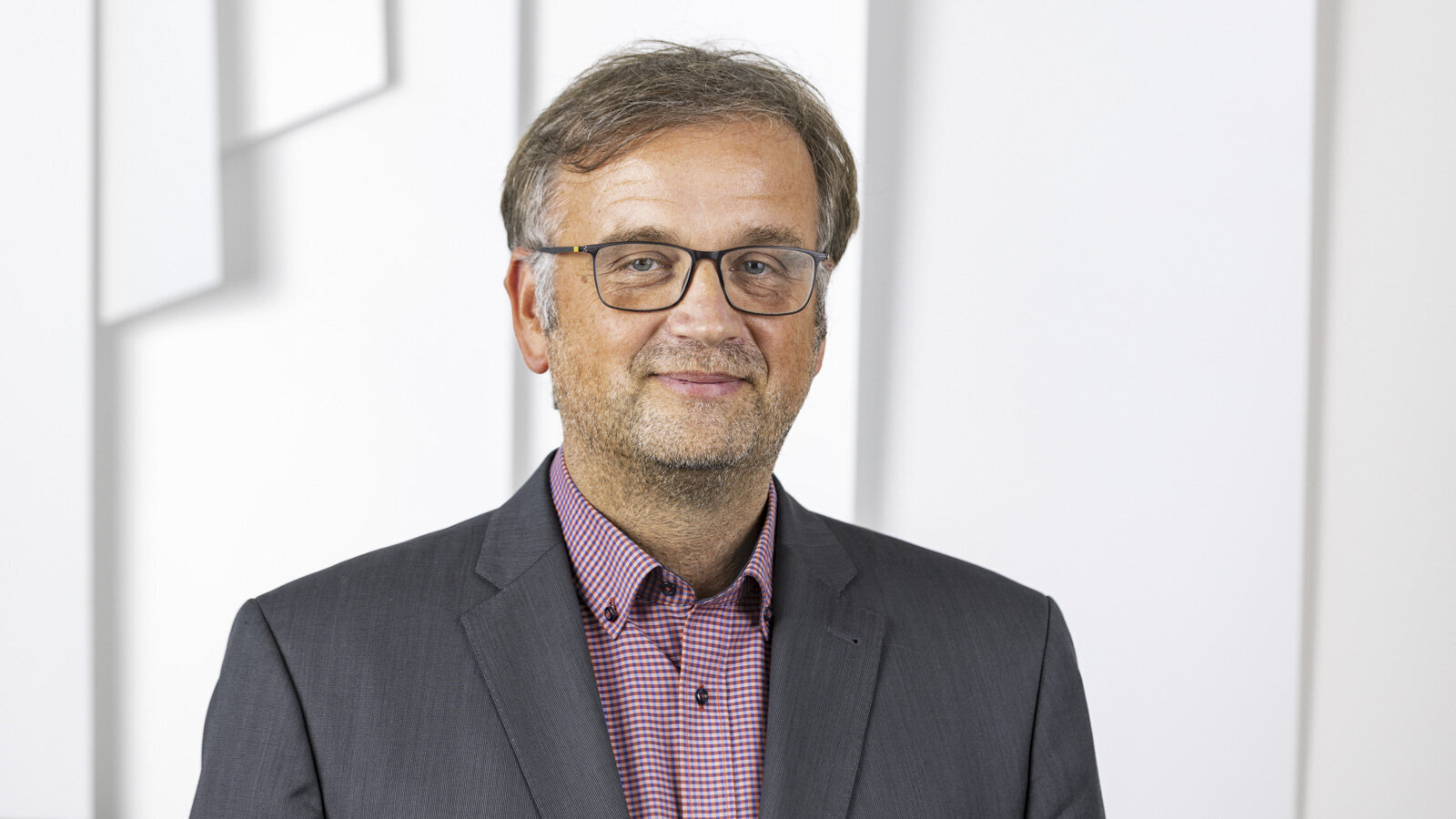
Prof. Dr. Oliver G. Schmidt was inaugurated as the first Scientific Director of the Research Center MAIN. Photo: Jacob Müller -
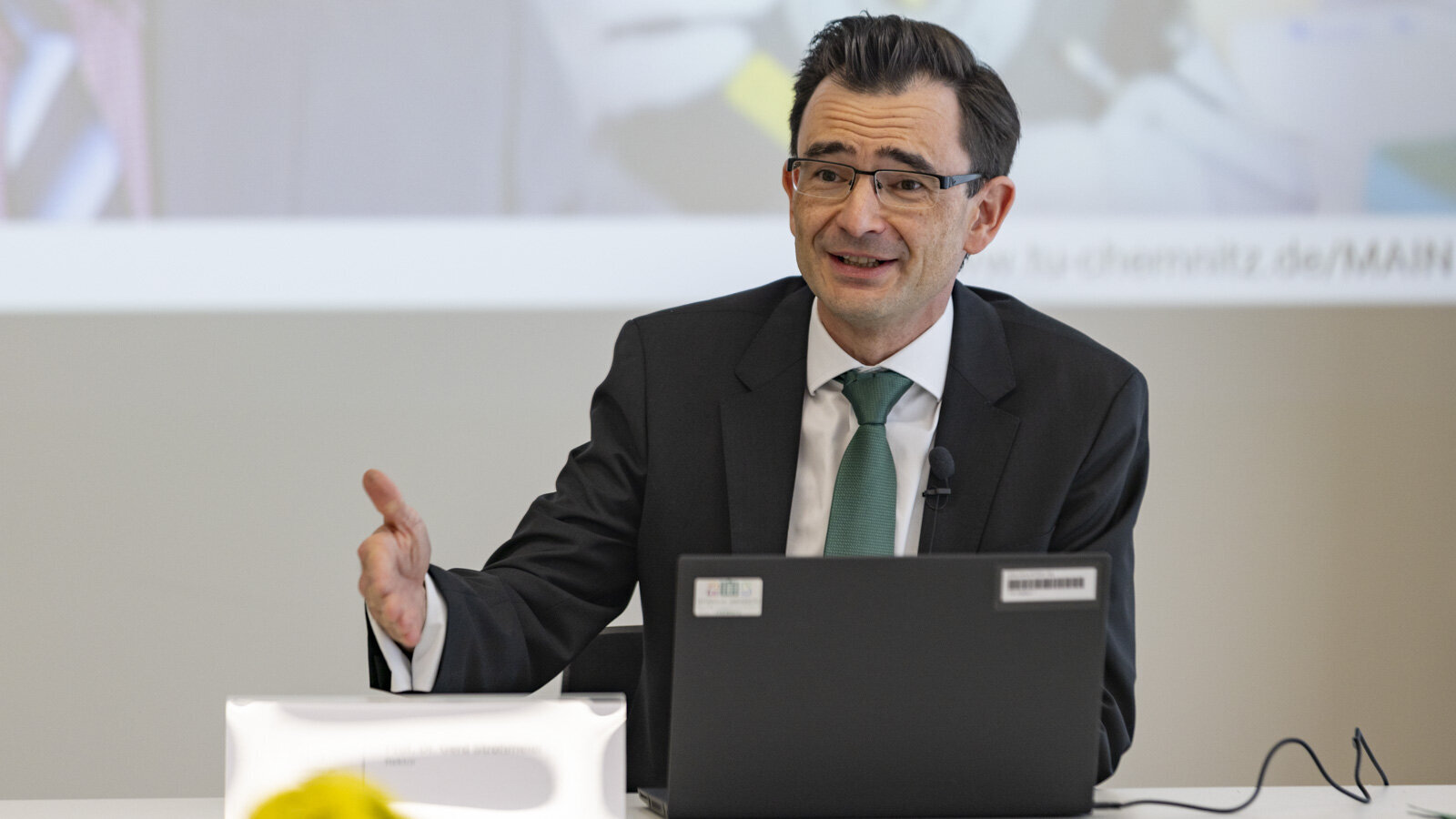
President Prof. Dr. Gerd Strohmeier commented on the inauguration: "I am extremely pleased that Mr. Schmidt - and thus a Leibniz Prize winner as well as one of the most cited scientists in his discipline worldwide - has now also taken over the management of the MAIN research center after his move to Chemnitz University of Technology last year. I am firmly convinced that he will also provide extremely significant impetus in this role both for the Research Center MAIN and more generally for the core competence of materials and intelligent systems. This applies not only to the achievement of worldwide excellence in cutting-edge research, but also to the promotion of highly qualified young scientists." -
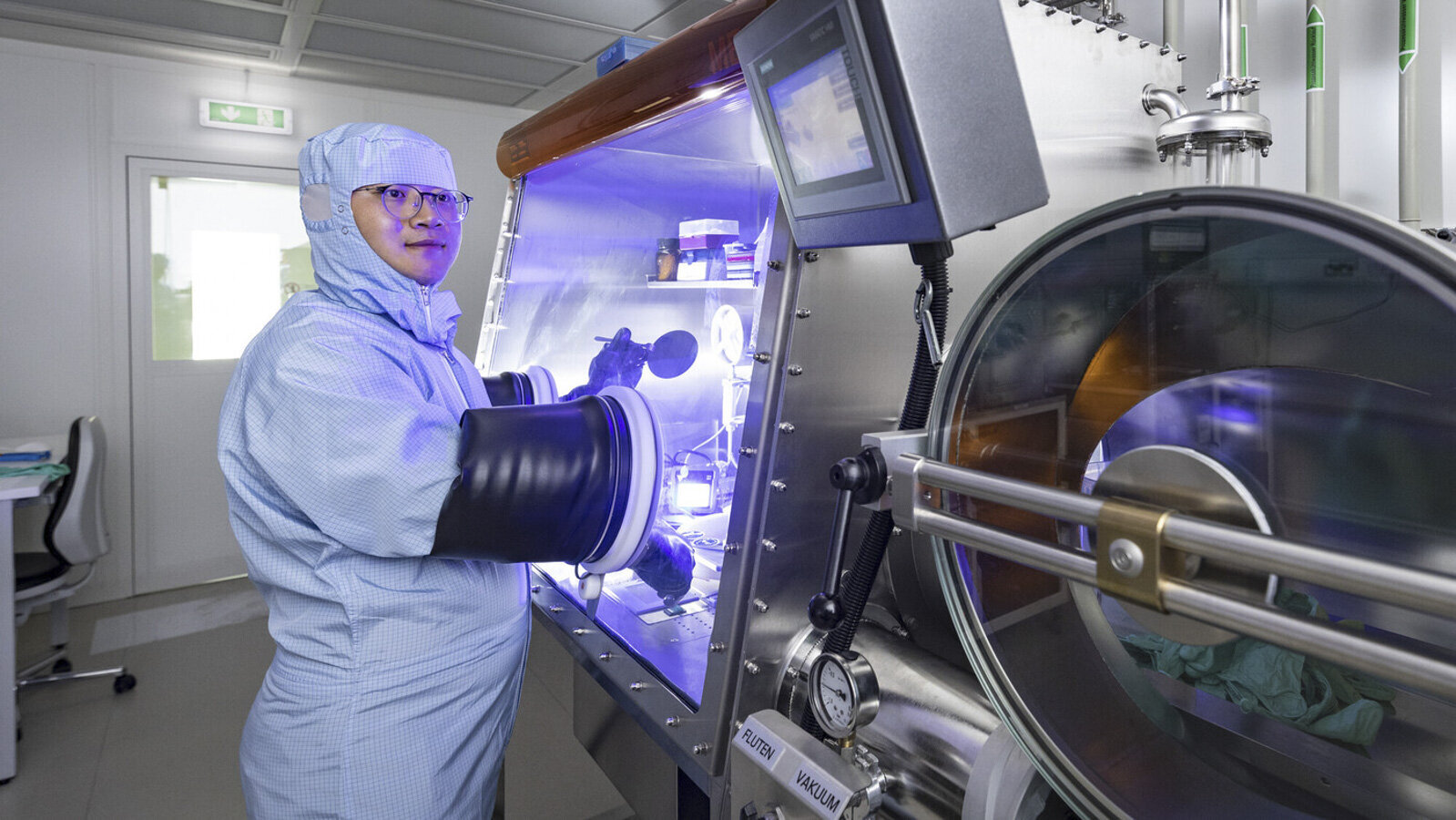
Cutting-edge research at the MAIN Research Center: Dr. Minshen Zhu is a research associate at the Professorship of Material Systems for Nanoelectronics at Chemnitz University of Technology and was awarded an ERC Starting Grant in 2022, one of the most prestigious research grants of the European Research Council and the first of its kind for Chemnitz University of Technology. Dr. Zhu is researching novel microenergy storage systems such as on-chip microbatteries. In the picture, he is testing a silicon wafer in the inert gas atmosphere of a safety cabinet. Reactive materials are used in research into such systems. That is why part of the research work takes place under chemically stable gases such as nitrogen, argon or helium. The Research Center MAIN offers ideal conditions for this work. Photo: Jacob Müller -
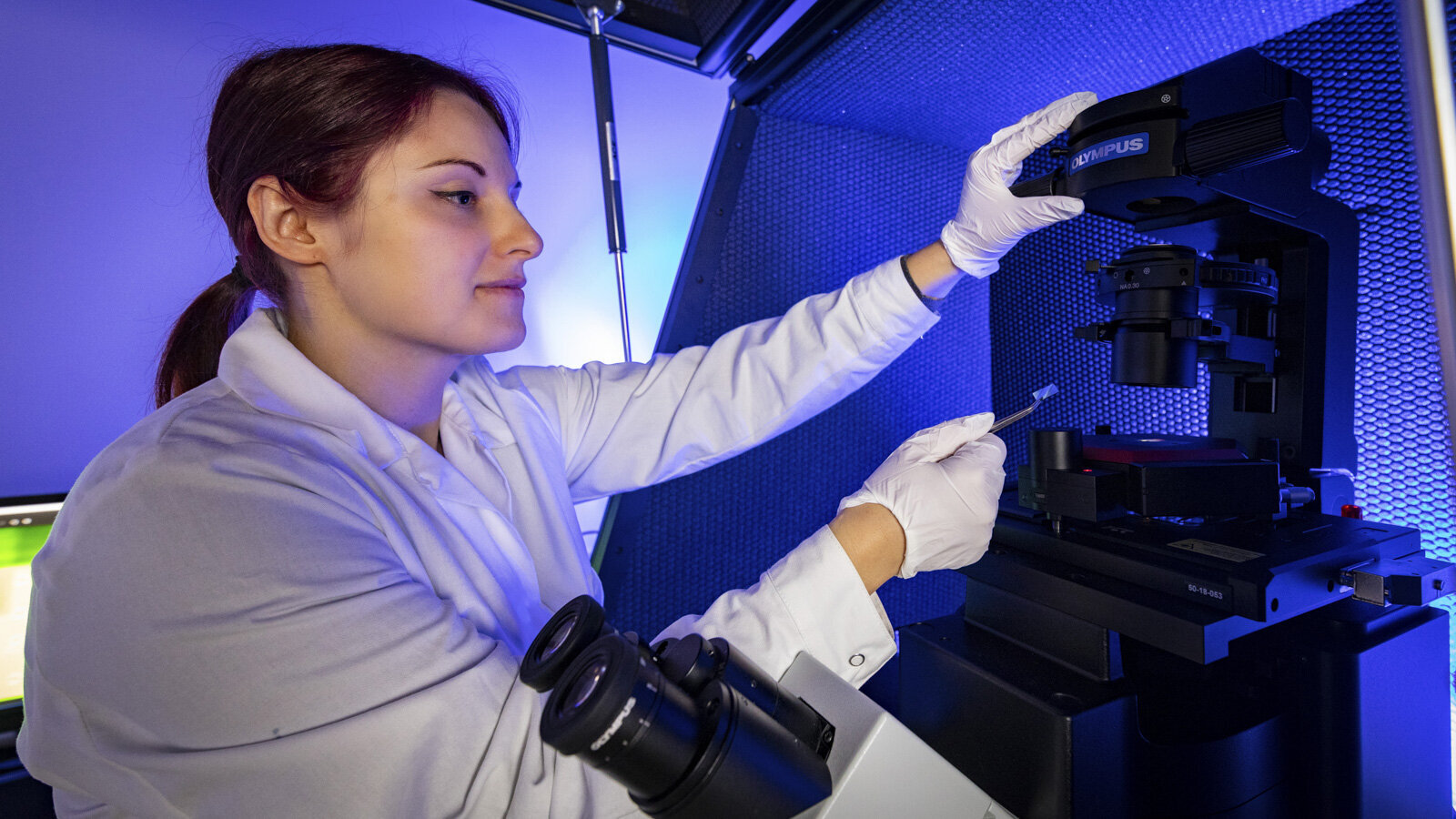
Julia Hann, research associate at the Center for Microtechnologies at Chemnitz University of Technology, checks the measuring head of a fluidic force microscope in a laboratory of the MAIN Research Group Optoelectronic Systems (Head: Prof. Dr. Thomas Otto). Fluidic technologies make use of the properties of fluids and flows for measurements. In this way, the smallest building blocks of the nanoworld, such as macromolecules and nanoparticles, can be measured and assembled on various surfaces to form new components such as biosensors. Photo: Jacob Müller -
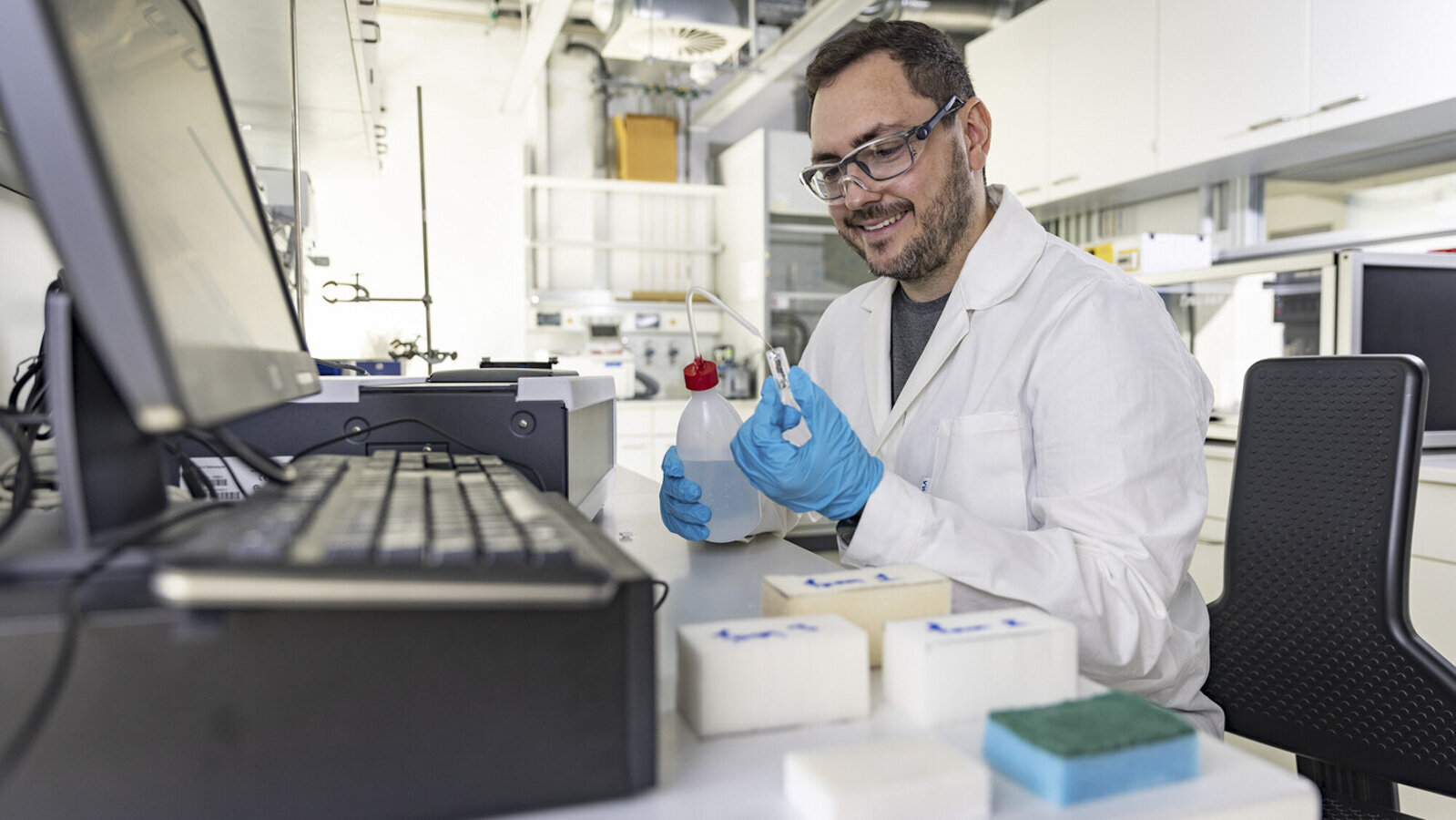
Dr. Pieter Swarts, research associate in the MAIN Research Group Organometallics (Head: Prof. Dr. Heinrich Lang), dilutes reagents with ultrapure water in preparation for spectroscopic investigations. Spectroscopic measurements like this one are used to determine the material composition of substances including liquids. Photo: Jacob Müller -
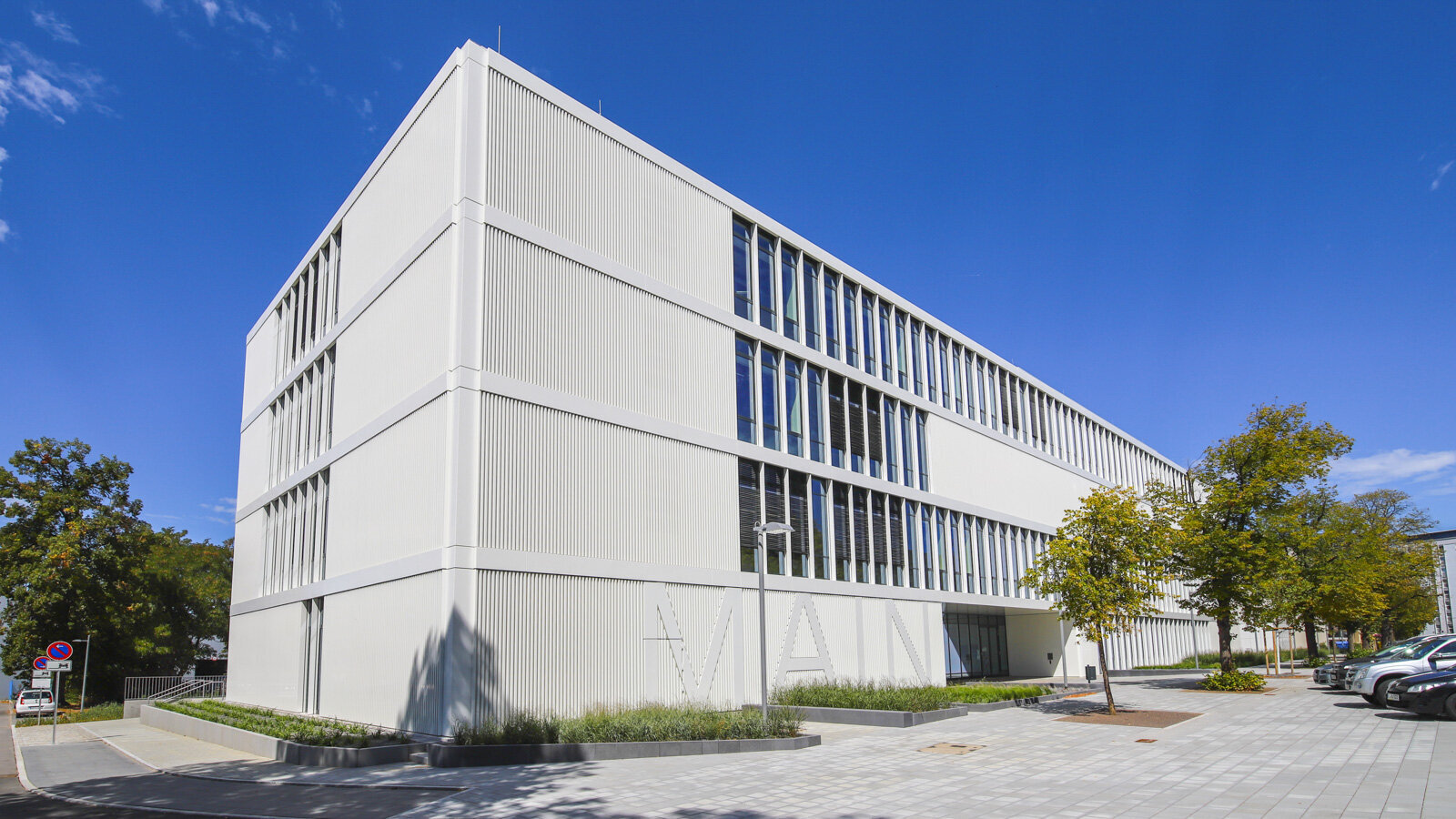
The Research Center for Materials, Architectures and Integration of Nanomembranes (MAIN) is a central scientific institution of Chemnitz University of Technology. It offers state-of-the-art research and working conditions to about 120 scientists. Photo: Jacob Müller
On September 5, 2022, the renowned top researcher and Leibniz Prize winner Prof. Dr. Oliver G. Schmidt, head of the Professorship Materials Systems for Nanoelectronics at Chemnitz University of Technology, was inaugurated as the first Scientific Director of the Research Center for Materials, Architectures and Integration of Nanomembranes (MAIN) by the President of Chemnitz University of Technology, Prof. Dr. Gerd Strohmeier. This also marks the end of the work of the task force, set up to establish this central scientific institution at the university, which was headed by Prof. Dr. Thomas Otto, honorary professor of Optoelectronic Systems at Chemnitz University of Technology.
"I am extremely pleased that Professor Schmidt – as a Leibniz Prize winner as well as one of the most cited scientists in his discipline worldwide - has now also taken over the management of the Research Center MAIN, after his move to Chemnitz University of Technology last year. I am firmly convinced that he will also provide extremely significant impetus in this role both for the Research Center MAIN and more generally for the core competence of materials and intelligent systems. This applies not only to the achievement of worldwide excellence in cutting-edge research, but also to the promotion of highly qualified young scientists," says Strohmeier.
Prof. Schmidt underlined the importance of Prof. Otto's work in setting up MAIN: "With the establishment of a central scientific institution at the interface between the natural sciences and engineering, Chemnitz University of Technology has broken new ground in many respects in terms of research organization. Prof. Thomas Otto has led the task force for the implementation of MAIN with great commitment and his first-class work has been instrumental in achieving excellent research results already in the initial phase."
For his services to MAIN and beyond, Prof. Otto received the Medal of Honor of Chemnitz University of Technology during the event. "Mr. Otto has dedicated himself in a very special way to the benefit of Chemnitz University of Technology. After the tragic death of Thomas Geßner, he took over the provisional management of the Professorship of Microtechnology as well as the Center for Microtechnologies, led the task force set up for the research center MAIN during the establishment and development phase, and contributed in various areas as a bridge builder in and outside the university," said Strohmeier during the presentation of the Medal of Honor.
Prof. Schmidt has been involved in over 940 publications in peer-reviewed journals, which are highly cited, including extremely prestigious international journals such as Nature and Science (h-index 115). In 2018, he was awarded the "Gottfried Wilhelm Leibniz Prize", Germany's most important research funding prize, by the German Research Foundation (DFG) for his outstanding work on the research, production and innovative application of functional nanostructures.
Superlatives in microcosm
Prof. Schmidt's name is associated with outstanding innovations. Under his leadership, for example, an international research team developed for the first time a method for electronic skin to "sense" touch with tiny electronic hairs independent of direction. This paves the way for a new type of biomedical sensor technology on the body and artificial skin for humanoid machines. Schmidt, together with researchers from the Leibniz Institute for Solid State and Materials Research (IFW) Dresden and the Changchun Institute of Applied Chemistry, also presented the "world's smallest battery", a groundbreaking technology for energy storage in the submillimeter range. Under Schmidt's aegis, it was also possible to acquire the first ERC Starting Grant for Chemnitz University of Technology. These are among the most renowned research funding instruments of the European Research Council and are awarded exclusively for outstanding research ideas of excellent young scientists.
Current research priorities of the research center in the field of micro- and nanotechnologies and examples of cutting-edge research
“The goal of the Research Center MAIN is to develop a new class of nanomembrane materials with broad application potential in the fields of high-performance flexible electronics, ultra-compact energy storage, micro- and nanorobotics, microfluidics and biomedicine,” says Schmidt. For example, in recent years, research teams under his leadership have developed the smallest batteries, the smallest biosupercapacitor, the smallest flexible electronic microcatheter with gripping function and drug delivery, and the smallest microelectronic robot with potential applications in biomedical environments. Most recently, this year’s demonstration of an electronic skin with artificial hairs for direction-dependent perception of touch under Prof. Schmidt’s leadership can be seen as an example of the rapid development of the research field and the great application potential of nanomembrane technologies. “In the future, we can expect to see breakthrough developments in these fields worldwide that will deal with a novel hardware implementation of a digitized world with extremely miniaturized but fully autonomous microsystems. These technologies will reach far into society, so that their exploration must take place in an interdisciplinary context. The Research Center MAIN represents a unique nucleus for this," assesses Prof. Schmidt.
Other topics being pursued at the Research Center MAIN include concepts of active and adaptive three-dimensional microelectronics, nanomembrane-based approaches for the health sector and medical technology, and chemical and fluidic processes for novel photonic and optoelectronic devices.
A major advantage of the MAIN research center is that on promising topics existing excellent research activities of Chemnitz University of Technology and its cooperation partners have been and are being successfully combined under one roof, resulting in many exciting research projects again and again," says Prof. Otto. The proximity of MAIN to the start-up center and to small and medium-sized enterprises in the neighboring Smart Systems Campus Chemnitz also provides ideal conditions for efficient technology transfer.
Preparing students for the complex microsystems technology of the future
"The Research Center MAIN also makes an outstanding contribution to interdisciplinary education in several courses of study in the faculties of Electrical Engineering and Information Technology and Natural Sciences at Chemnitz University of Technology, as well as to international exchange in the field of micro- and nanotechnologies," says Schmidt. For example, academic work in the English-language master's program "Micro and Nano Systems" at the Research Center MAIN can combine a wide range of competencies – from microelectronics and microsystems technology to the fundamentals of electrochemical energy storage, microrobotics and photonics, and biotechnology – to prepare students for the complex microsystems technology of the future. The knowledge, generated in research, flows immediately into teaching. In addition, at the interface between theory and practice, MAIN offers ideal conditions for students to work on challenging topics at the boundaries between the natural sciences and engineering.
About the person: Prof. Dr. Oliver G. Schmidt
After graduating from the German School in London in 1990, Oliver G. Schmidt studied physics at the Christians-Albrecht University of Kiel, at King's College London and at the Technical University in Berlin. After completing his doctoral thesis at the Max Planck Institute for Solid State Research in Stuttgart and his PhD in 1999 at the Technical University of Berlin, Schmidt worked as a research associate at the Max Planck Institute for Solid State Research in Stuttgart. After a research stay at the University of Southern California, he returned to Stuttgart as a research group leader. In 2003, he habilitated at the University of Hamburg. In 2007, he was appointed Professor of Material Systems for Nanoelectronics at the Faculty of Electrical Engineering and Information Technology at Chemnitz University of Technology. At the same time, he became director of the Institute for Integrative Nanosciences at the Leibniz Institute for Solid State and Materials Research Dresden. Furthermore, he has held a secondary membership in the Faculty of Natural Sciences at Chemnitz University of Technology since 2007. Subsequently, Schmidt played a key role in initiating the construction of the new Center for Materials, Architectures and Integration of Nanomembranes (MAIN) at Chemnitz University of Technology. In 2021, he moved completely to Chemnitz University of Technology. In 2022, he became Scientific Director of the Research Center for Materials, Architectures and Integration of Nanomembranes (MAIN) at Chemnitz University of Technology.
Schmidt has received several awards, including the Gottfried Wilhelm Leibniz Prize of the German Research Foundation in 2018 and one of the prestigious ERC Advanced Grants of the European Research Council in 2019. In 2018, he was elected to the National Academy of Science and Engineering (acatech). In 2020, he became a member of the Saxon Academy of Sciences. In 2022, he was appointed to the Senate Committee and the Grants Committee of the German Research Foundation for Research Training Groups, two of the DFG's highest bodies.
Background: Research Center for Materials, Architectures and Integration of Nanomembranes (MAIN)
The research building was funded with around 34.3 million euros in federal and state funds, as part of a successful application to the Science and Humanities Council of the Federal Republic of Germany, and provides state-of-the-art research and working conditions for around 120 scientists. On August 13, 2018, the new building of the Research Center for Materials, Architectures and Integration of Nanomembranes (MAIN) was handed over to Chemnitz University of Technology, and two years later the research center was established as a central institution of Chemnitz University of Technology. Its objective is to conduct exploratory research into the fundamental physical and chemical properties and to develop the engineering application potential of the material class of flexible nanostructured membranes (nanomembranes). The term nanomembranes covers very thin (down to an atomic layer) but laterally extended, up to the centimeter scale, and microstructured functional structures that are characterized by special electronic, optoelectronic or electrochemical properties with high mechanical flexibility. They form the basis for new types of tiny components that can be bent, stretched and shaped and are thus extremely adaptable.
For further information, please contact Prof. Dr. Oliver G. Schmidt, Scientific Director of the Research Center MAIN and head of the Professorship of Material Systems for Nanoelectronics at Chemnitz University of Technology, tel. +49 371 531-36761, e-mail oliver.schmidt@main.tu-chemnitz.de.
(Translation: Brent Benofsky)
Matthias Fejes
07.09.2022




